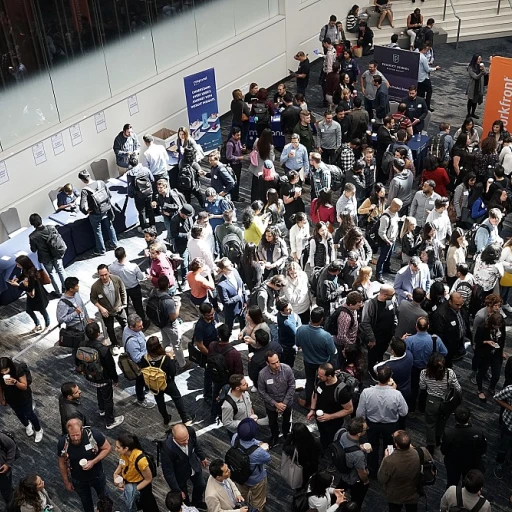Understanding Employee Assessment Tools
Introducing Employee Assessment Tools
Employee assessment tools have become integral to the hiring process and overall employee management. These tools are crafted to evaluate skills, strengths, and weaknesses of candidates as well as current employees, ensuring that the workforce aligns with job requirements and organizational goals. In essence, they serve as a guiding light for identifying talent and aligning it with business needs. The modern job market is highly competitive and identifying suitable candidates goes beyond simple interviews. Pre-employment assessment tests provide a data-driven approach to screening candidates, helping pre-empt hiring decisions that lead to successful employee onboarding. Focusing on employee development, assessment tools can pinpoint areas requiring training or improvement, facilitating tailored development programs. These insights are vital for succession planning and maintaining high levels of employee engagement. Moreover, employee assessments offer a structured framework for evaluating employee performance within their roles, ensuring that team dynamics are optimized for maximum productivity. Incorporating these tools into employee skill evaluation helps in crafting an efficient workforce that drives organizational success. To explore the role of data analytics in understanding employee performance, you may find this source insightful: understanding employee performance.Types of Employee Assessment Tools
Exploring Various Employee Assessment Solutions
Understanding the diverse types of employee assessment tools is crucial for enhancing workforce performance. These tools, designed to evaluate skills, job readiness, and team alignment, play a vital role in making informed hiring decisions and managing talent effectively. One popular category is pre-employment assessments. These evaluations are part of the hiring process to gauge candidates' compatibility with a job. Pre-employment tests typically focus on cognitive abilities, personality traits, and specific skills required for the role. By assessing these parameters early, companies can streamline the selection process and pinpoint the best fit for their teams. Skill assessments are another essential tool, often used for both hiring and employee development. Such assessments provide insights into an individual's strengths and weaknesses, enabling targeted training and development. This fosters employee engagement and guides succession planning efforts. Tools focused on performance management offer detailed employee performance insights. These assessments evaluate how well employees meet their job responsibilities and how they contribute to the organization's goals. Continuous analysis of these metrics helps in refining the overall assessment process and enhances employee skill development. Behavioral and psychological assessments also play a role in understanding team dynamics and employee motivation. By delving into these areas, organizations can undertake effective employee assessments to boost workplace culture and productivity. Finally, 360-degree feedback tools gather performance feedback from a variety of sources, offering a comprehensive view of an employee's capabilities. Such holistic insights are invaluable for crafting effective leadership goals for performance reviews, bolstering both individual and team achievements. As you consider implementing these tools, it's essential to use them in tandem with the overarching goals of employee development and management. A thoughtful approach to these assessments ensures a robust, efficient, and inclusive process that aligns with your organization's objectives.Implementing Assessment Tools Effectively
Optimizing the Process to Enhance Workforce Performance
To effectively implement employee assessment tools in your organization, it's crucial to integrate them into the existing workflow seamlessly. Each step in the assessment process—whether it's pre-employment screenings or ongoing employee development—should align with your organization's overall objectives to ensure a cohesive strategy. First, assess the specific skills and competencies relevant to your team and tailor assessment tools to measure these areas accurately. Collaborating with a cross-functional team can provide insights into what skills are most critical for success within various roles and how they support the broader goals of the organization. Additionally, investing in training sessions for managers and HR personnel on effectively using these tools ensures that assessments are conducted fairly and consistently. Educators can play a pivotal role in elucidating how to interpret the results to enhance employee performance. The integration of technology is vital to streamline the assessment tools into the work process. Using digital platforms for skill assessment tests and pre-hire evaluations not only saves time but also provides a more structured approach to capturing and analyzing assessment data.Ensuring Fair and Objective Use of Assessment Tools
Transparent communication with candidates and employees about how their assessments will be used in hiring decisions, succession planning, and employee engagement initiatives is paramount. This transparency fosters a culture of trust and encourages employee participation and acceptance of the assessment results. Moreover, managers should be equipped with the knowledge to focus on both the strengths and weaknesses identified through assessments. Implementing feedback mechanisms and development plans based on assessment results can drive meaningful employee improvement and enhance overall workforce performance. Regular reviews of the assessment tools will ascertain their effectiveness and any necessary adjustments in the selection process. Engage with stakeholders and continuously measure tool performance to ensure alignment with your evolving organizational needs. For an in-depth exploration on how to incorporate staffing analytics into your workflow, you might find valuable insights in this resource on enhancing workforce efficiency through human resources staffing analytics.Analyzing Data from Assessment Tools
Data Insights for Employee Performance Optimization
In the realm of employee assessments, analyzing data collected from various assessment tools can significantly elevate the hiring process and employee performance. This analysis is crucial as it enables management to make informed decisions regarding talent development and team dynamics. First and foremost, a comprehensive understanding of the data generated from assessments is necessary. Assessment tools, whether they focus on skill assessment, pre-employment testing, or job performance evaluations, generate rich datasets about employee skills, strengths, and weaknesses. To harness the potential of this data, organizations should:- Identify Patterns: Evaluation datasets often contain patterns indicating how employees perform in different areas of their work. By identifying these patterns, human resources analytics can provide insights into individual and team capabilities.
- Compare Performance Metrics: Use the data to compare pre-hire assessment results with actual job performance, thereby verifying the effectiveness of the hiring decisions and the selection process.
- Enhance Employee Development: Tailor development programs to address identified gaps in employee skills. With detailed insights into team strengths and areas needing improvement, managers can fine-tune employee development plans to optimize workforce performance.
- Inform Succession Planning: Accurate assessment data aids in identifying potential candidates for key roles, facilitating more strategic succession planning.
- Boost Employee Engagement: Understanding employee strengths and providing targeted development opportunities leads to increased engagement. This data-driven approach fosters a sense of recognition and progression within the company.
Overcoming Challenges in Employee Assessment
Navigating Common Employee Assessment Challenges
Implementing employee assessment tools can significantly improve the hiring process and development strategies within an organization. However, this process is not without its challenges. From integration issues to data interpretation difficulties, several obstacles can arise, potentially hindering the overall performance of both the tools and the workforce. Below are some common challenges and strategies to overcome them:- Resistance to Change: Employees and management may resist adopting new assessment tools due to unfamiliarity or perceived complexity. To mitigate this, it is crucial to engage stakeholders early in the selection process and provide comprehensive training sessions.
- Data Overload: While assessment tools generate valuable insights, the sheer volume of data can be overwhelming. Investing in effective data management solutions is key, helping teams focus on relevant metrics, such as skill assessments linked to specific job roles.
- Interpreting Results: Understanding the data collected from assessments can be tricky if the tools are not user-friendly or lack context. Clear communication of findings and targeted workshops can empower managers to make informed hiring decisions and succession planning.
- Tool Selection: Choosing the right tools for your organization’s needs can be daunting. Prioritize tools that align with your company’s goals, such as pre-employment assessments for hiring and skill-based assessments for employee development.
- Ensuring Fairness: To maintain credibility, it's vital to address potential biases in assessment tests. Regularly review tools to ensure they provide equitable opportunities for all candidates and employees, regardless of their background.
Future Trends in Employee Assessment Tools
Embracing Technological Advancements in Employee Assessments
The landscape of employee assessments is rapidly evolving, driven by technological advancements and the changing dynamics of the workforce. As organizations strive to enhance their hiring process and employee development strategies, it's crucial to stay ahead of the trends shaping the future of assessment tools.
AI and Machine Learning Integration
Artificial intelligence (AI) and machine learning are transforming the way assessments are conducted. These technologies enable more personalized and accurate evaluations by analyzing vast amounts of data quickly. AI-driven tools can help identify candidates' skills and potential fit for a job, making the hiring decisions more data-driven and less prone to bias.
Focus on Soft Skills
While technical skills remain important, there is a growing emphasis on assessing soft skills such as communication, teamwork, and adaptability. Future assessment tools will likely include more sophisticated methods to evaluate these crucial competencies, ensuring that employees not only fit the job requirements but also contribute positively to the team dynamics.
Continuous Feedback and Development
Traditional performance reviews are being replaced by continuous feedback mechanisms. This shift allows for ongoing employee engagement and development, helping employees to identify strengths and weaknesses in real-time. Assessment tools are adapting to facilitate this continuous feedback loop, providing insights that can guide employee performance improvement and succession planning.
Remote Work and Virtual Assessments
The rise of remote work has necessitated the adaptation of assessment tools to virtual environments. Pre-employment assessments and employee skill evaluations are increasingly conducted online, requiring tools that are not only effective but also accessible to candidates and employees working from various locations. This trend is likely to continue, influencing the design and implementation of future assessment processes.
As organizations continue to refine their assessment strategies, staying informed about these trends will be essential for effective talent management and employee performance enhancement.








